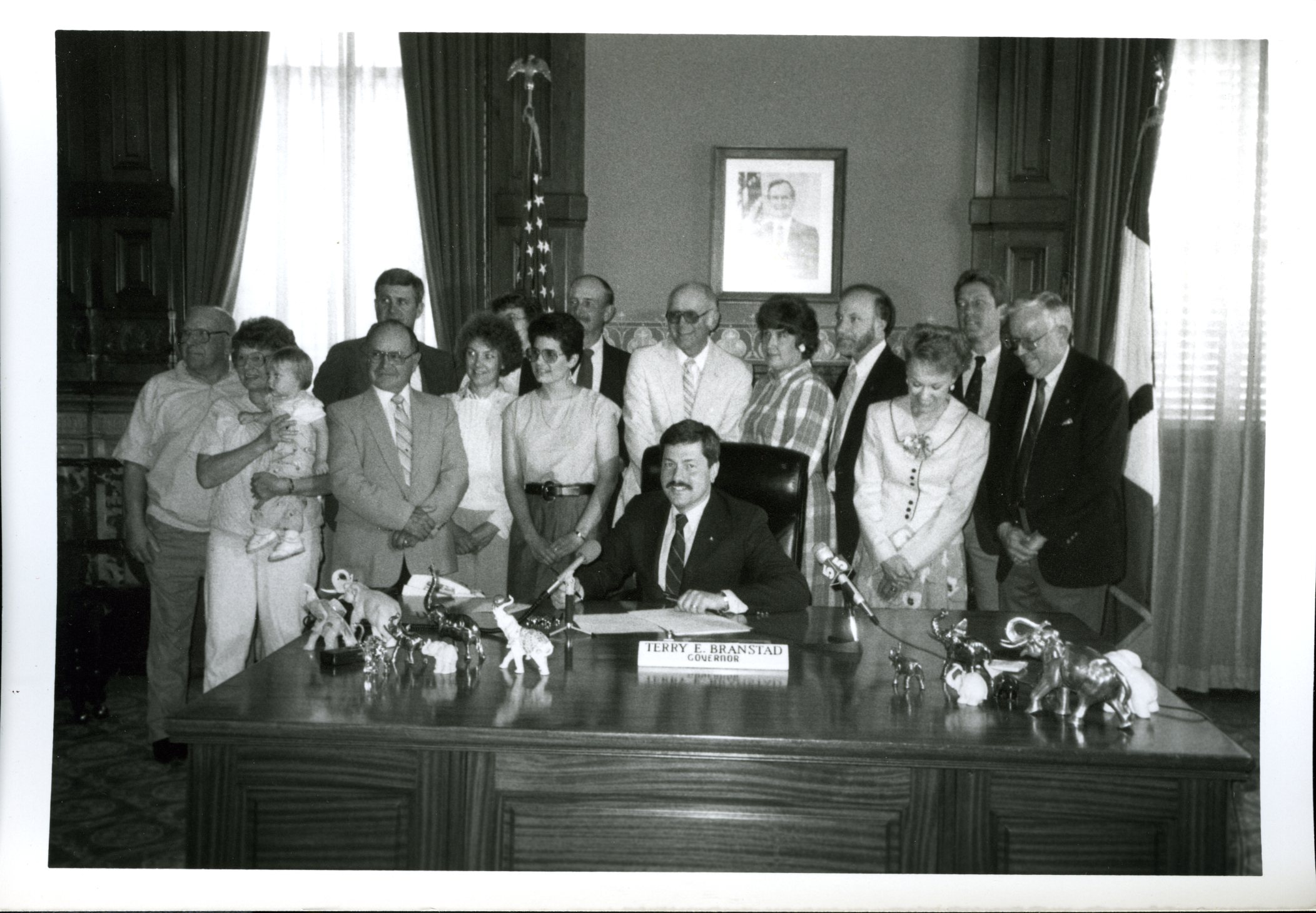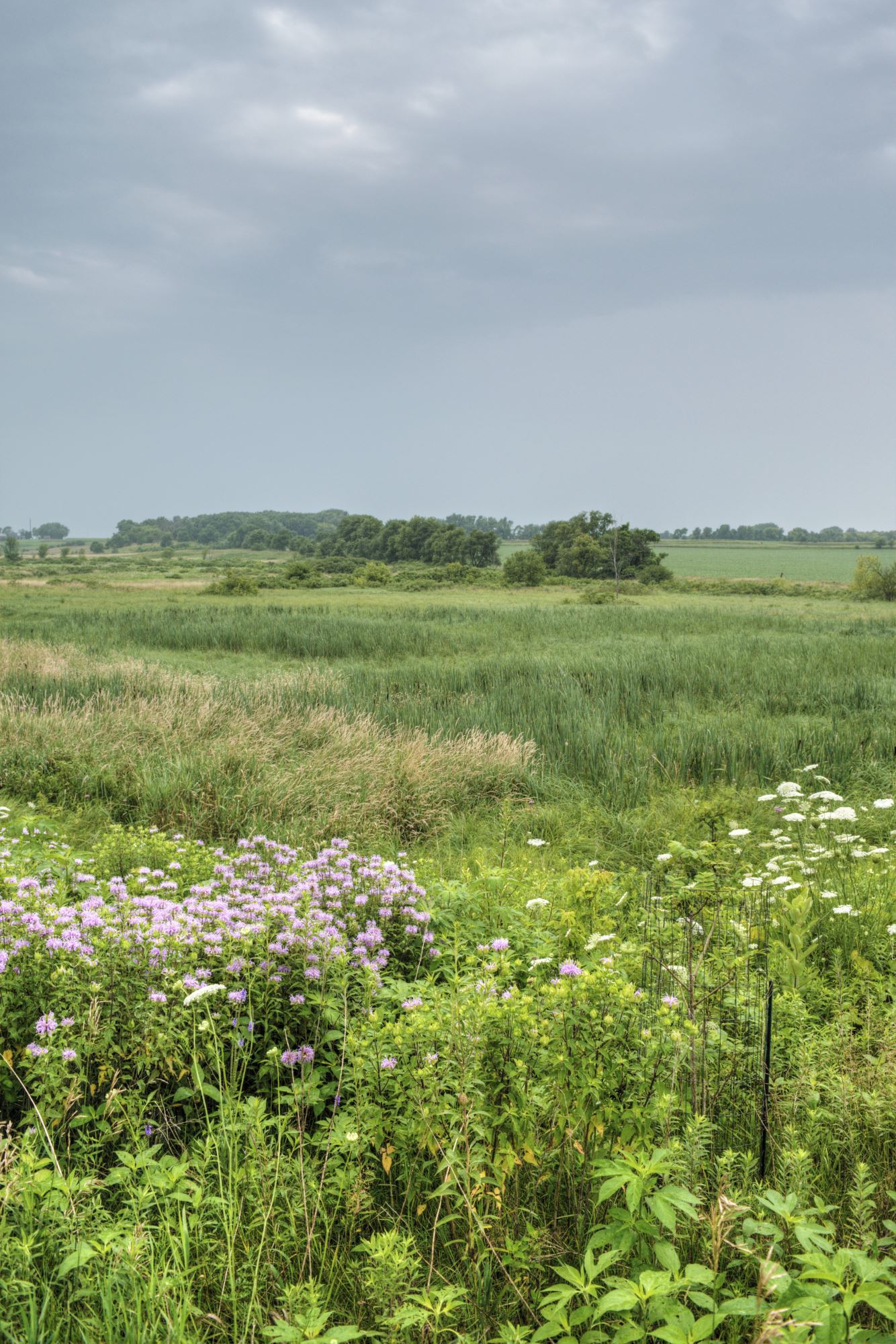A history of REAP
By Andrea Piekarczyk on January 29, 2018 in Blog
On Tuesday, April 25, 1989, all 100 members of Iowa’s House of Representatives voted “yea” on Iowa’s Resource Enhancement And Protection (REAP) Act. No party lines were drawn, and 100 green lights lit up the room. Gov. Terry Branstad signed the bill into law on May 27, 1989, and the REAP legislation became effective immediately.
Even at the time, the support of REAP was extraordinary.
“The most heartening thing about it was that… when it went through the legislature there wasn’t anyone against it,” remembers INHF President Emeritus Mark Ackelson. “It was nearly unanimous, and even then things didn’t happen unanimously.”
The foundation for REAP came from a special legislative study committee devoted to recreation, tourism and leisure. Established in 1985, the committee worked for two years before submitting its final recommendations in 1987.
Representatives from 25 private conservation-related organizations worked with interested legislators to design the REAP forumla. INHF was one of those organizations, which would collectively become known as the REAP Alliance. For Ackelson, the cooperation of so many different organizations was vital to the bill’s passage. “We were going to stand together as individuals and organizations for Iowa’s land and wildlife, and not allow ourselves to be pitted against each other in appropriations,” he recalled.
The REAP Alliance still exists today, encompassing 38 different partners, including recreation, conservation, historical preservation and sporting organizations — all dedicated to supporting the REAP program. For Iowa DNR REAP Coordinator Tammie Krausman, these relationships are essential to the identity of the program.
“I think my favorite part of REAP is that it was developed by such a diverse partnership, so REAP really includes everything,” said Krausman “It goes back to the fundamental: we want to do all these different things. So we’re going to go in together to get more for all of us. And we’re going to figure out who needs what, and we’re going to stick to that.”
A win for everyone
Every year, Krausman gets to see the ideas that Iowa counties have for their communities. REAP was, and continues to be, about preserving and elevating the best Iowa has to offer. “It’s about ‘and,’” Krausman said. “Not agriculture or conservation, not natural or cultural resources, not cities or rural areas — REAP is about ‘and.’”
The focus on ‘and’ is made possible by the REAP formula — one of the law’s most groundbreaking elements. That it remains unchanged, and continues to function as originally designed, speaks to the care and consideration of the bill’s creators.

REAP funding is dedicated to a broad range of interests, encompassing public land protection, historic preservation, cost-share programs with farmers that enhance water quality and soil conservation, community projects and conservation education. With so many pockets of support, the REAP program manages to be at once generous and economical. In its nearly 30 years, REAP has invested over $360 million in Iowa’s communities and counties, large and small. Often, that investment (through grants and allocations) is matched locally to nearly triple the financial impact of REAP every year.
“REAP touches every county and it is available to every municipality, regardless of size. It encourages the private sector to be involved — the leverage involved is tremendous,” Ackelson said.
INHF Vice President Anita O’Gara agreed: “The use of the money is so vetted in this program. Everything is so carefully done, you can trace where every dollar went — and that’s true of all of REAP.”
Democracy in action
REAP is designed for constant evaluation and feedback — rare for any government program. Individual counties each have a REAP committee to coordinate REAP projects; this committee also develops a county REAP plan to help guide future REAP projects. Iowans may participate in regional REAP assemblies, which take place every two years in September and October. Here, all REAP programs and associated projects are presented. Opportunities for regional REAP projects are identified and participants can recommend changes to REAP policies, programs and funding.
To O’Gara, the REAP program is democracy in action. “Everyone has an opportunity to speak up for their priorities in conservation. All of us can help shape the conservation priorities close to home. Hundreds of people have a say. The grant processes are open and competitive, so we see how these public funds are being spent for the greatest impact for the people and the land.”
Building Iowa’s future
Looking toward the future, it seems likely that REAP will continue supporting Iowa’s natural and cultural resources. Krausman thinks this is because the program’s creators “really nailed what about Iowa is good and how it works… it’s the way everyone works together.” With a little financial help from REAP, small communities can leverage big resources to showcase what makes them special.
“The key to rural economic development is that people need to have a high quality of life,” Krausman said. “As more individuals are able to work remotely, the question becomes: Where do I want to have my family, where do I want to live, what can I do when I’m done with work?” Iowa communities have so many opportunities to offer; REAP just helps them shine.
“REAP is one of those rare programs where everybody benefits — it’s not just one portion of the state,” said Joe McGovern, INHF president. “Continuing the tradition of REAP and providing it full funding is one of the best things the legislature can do to ensure the health and vibrancy of Iowa’s communities.”